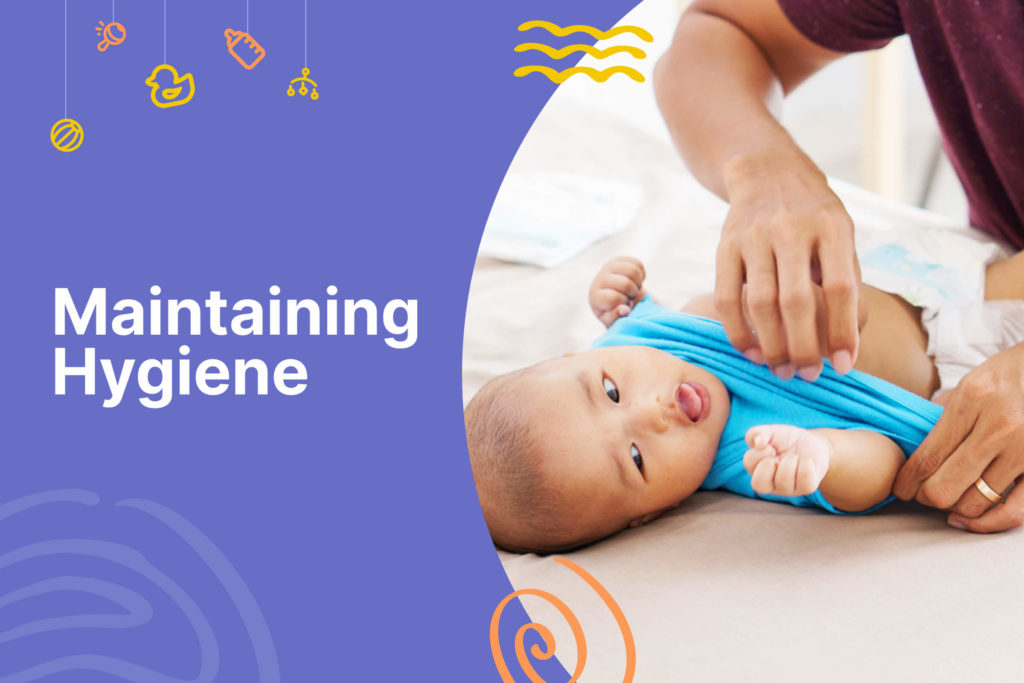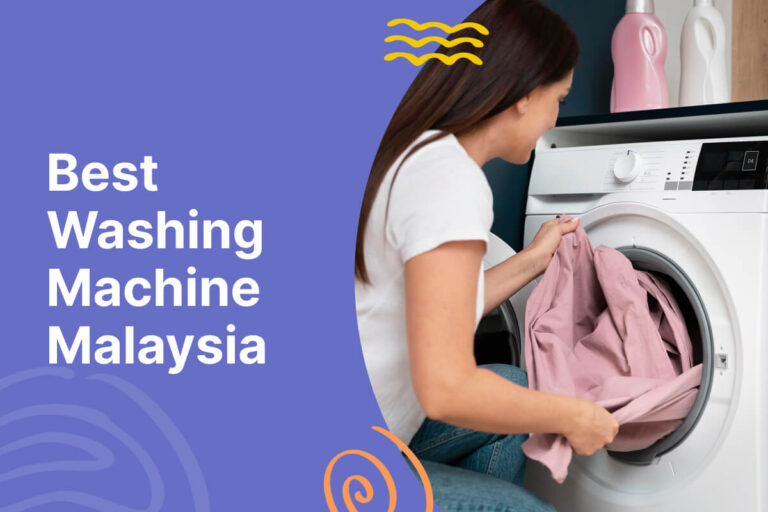As a new parent, one of the most essential skills to learn is diaper changing. In Malaysia, where the climate can be hot and humid, it’s crucial to know how to keep your baby clean, dry, and comfortable.
In this comprehensive guide, we’ll cover everything you need to know about diaper changing, from choosing the right diaper to maintaining hygiene practices.
Choosing the Right Diaper
The first step in successful diaper changing is selecting the right diaper for your baby’s needs. Here are some factors to consider:
Types of Diapers Available in Malaysia
As a new parent in Malaysia, choosing the right diaper for your baby is a crucial decision. With various types of diapers available in the market, it can be challenging to determine which one is best for your family’s needs.
In this guide, we’ll explore the pros and cons of the two most common types of diapers available in Malaysia: disposable and cloth diapers.
| Type of Diaper | Pros and Cons |
|---|---|
| Disposable Diapers | Pros: Convenient to use, easy to dispose of, widely available in stores. Cons: Expensive over time, contribute to environmental waste, may contain chemicals that can irritate the skin. |
| Cloth Diapers | Pros: More eco-friendly and cost-effective over time, reusable and customizable, may reduce the risk of diaper rash. Cons: Require more effort to maintain and clean, may leak if not secured properly, may not be practical for all families. |
Remember to consider your personal preferences, lifestyle, and budget when choosing the type of diaper for your baby.
Factors to Consider When Choosing a Diaper
When choosing a diaper, consider factors such as absorbency, fit, and comfort. Look for diapers with a high absorbency rate to minimize leaks, and ensure a proper fit to prevent chafing or irritation. Additionally, consider your baby’s size and any potential allergies or sensitivities.
Importance of Selecting the Right Size
Choosing the right size diaper is critical for your baby’s comfort and protection against leaks. Be sure to refer to the manufacturer’s sizing chart and adjust accordingly as your baby grows.
Setting up a Diaper Changing Station
To make the diaper-changing process easier and more efficient, it’s helpful to have a dedicated diaper-changing station. Here are some tips for setting one up:
Choosing the Right Location
Select a location that’s easily accessible and safe for your baby. Avoid areas with sharp corners or objects that could pose a hazard.
Supplies Needed for a Diaper Changing Station
Be sure to have all the necessary supplies within reach, including diapers, wipes, diaper cream, and a changing pad. Having a diaper pail or trash can nearby can also be helpful for disposing of soiled diapers.
Ensuring a Safe and Comfortable Environment for the Baby
Ensure the diaper changing station is clean and hygienic, and use a changing pad or towel to provide a soft surface for your baby.
Additionally, consider playing soothing music or using a mobile to keep your baby entertained during the diaper-changing process.

Step-by-Step Guide to Diaper Changing
Now that you’ve chosen the right diaper and set up a diaper changing station, it’s time to learn the step-by-step process of changing a diaper:
| Step | Description |
|---|---|
| Preparing for a Diaper Change | Gather all the necessary supplies and ensure the diaper changing station is clean and ready to use. |
| Removing the Soiled Diaper | Carefully remove the soiled diaper, being sure to hold your baby’s legs and bottom securely to prevent any messes. |
| Cleaning the Baby’s Bottom | Using baby wipes or a damp cloth, gently clean your baby’s bottom from front to back. Be sure to wipe thoroughly to avoid any residual feces or urine. |
| Applying Diaper Cream (If Necessary) | If your baby has a diaper rash or irritation, apply a thin layer of diaper cream to soothe the skin and prevent further irritation. |
| Putting on a Fresh Diaper | Place the clean diaper under your baby’s bottom, making sure the tabs are aligned properly. Pull the front of the diaper up and secure the tabs snugly. |
| Disposing of the Soiled Diaper and Cleaning Up | Dispose of the soiled diaper in a diaper pail or trash can and thoroughly wash your hands and any used supplies. |

Maintaining Hygiene
Proper hygiene practices are crucial for preventing the spread of germs and infections during diaper changing. Here are some tips for maintaining hygiene:
Importance of Proper Hygiene Practices During Diaper
Diaper changing can be a messy process, and proper hygiene practices are essential to prevent the spread of germs and infections. Here are some tips to keep in mind:
Tips for Washing Hands Before and After Diaper Changing
Washing your hands thoroughly before and after diaper changing is critical to prevent the spread of germs. Use warm water and soap, and be sure to scrub your hands for at least 20 seconds.
How to Clean and Sanitize Diaper Changing Supplies
Regularly clean and sanitize all diaper changing supplies, including the changing pad, diaper pail, and wipes container. Use mild soap and water, and consider using a disinfectant spray or wipes for added protection against germs.
Troubleshooting Common Diaper Changing Problems
Even with the best intentions, diaper changing can sometimes lead to issues such as diaper rash or leaks. Here’s how to troubleshoot common diaper-changing problems:
| Problem | Solution |
|---|---|
| Dealing with Diaper Rash | If your baby develops a diaper rash, apply diaper cream to soothe the skin and provide a barrier against further irritation. Additionally, consider using a diaper rash ointment with zinc oxide for added protection. |
| Addressing Leaks and Blowouts | Leaks and blowouts can be frustrating, but there are steps you can take to prevent them. Ensure the diaper is the right size and properly secured, and consider using a diaper booster pad for added absorbency. |
| Solving Fit Issues with the Diaper | If you’re experiencing fit issues with the diaper, try adjusting the tabs or switching to a different brand or size. Consider consulting with a pediatrician or a diaper specialist for further assistance. |
Solving Fit Issues with the Diaper
If you’re experiencing fit issues with the diaper, try adjusting the tabs or switching to a different brand or size. Consider consulting with a pediatrician or a diaper specialist for further assistance.
Final Thoughts
Diaper changing is an essential part of caring for a baby, and with these tips, you’ll be well-equipped to handle it like a pro. Remember to choose the right diaper, set up a diaper changing station, maintain hygiene, and troubleshoot common problems. With patience and practice, diaper changing will become second nature in no time.
FAQs
- How often should I change my baby’s diaper? It’s recommended to change your baby’s diaper every 2-3 hours or as soon as it becomes soiled or wet.
- How can I prevent diaper leaks at night? Consider using a diaper booster pad or a nighttime diaper with added absorbency for overnight use.
- Can I reuse wipes or should I use a fresh one for each diaper change? It’s recommended to use a fresh wipe for each diaper change to maintain proper hygiene.
- What should I do if my baby develops a persistent diaper rash? Consult with a pediatrician or a dermatologist for further evaluation and treatment options.
- Are cloth diapers more eco-friendly than disposable diapers? Cloth diapers are generally considered more eco-friendly than disposable diapers due to their reusability, but they require more effort to maintain and may not be practical for all families.
The Most Popular Baby Gifts for Newborns
Blissbies’ collection of newborn baby gift sets and hampers is carefully curated to provide positive learning experiences for babies while supporting new parents on their journey. Our website offers a wide selection of options for baby girls, boys, and new parents, ensuring that you can find the perfect present for your loved one.
With fast and reliable shipping, your gift will be delivered straight to your doorstep. Give the gift of joy with Blissbies and make your little one’s day. Visit our website today to explore our baby gift set collection.







